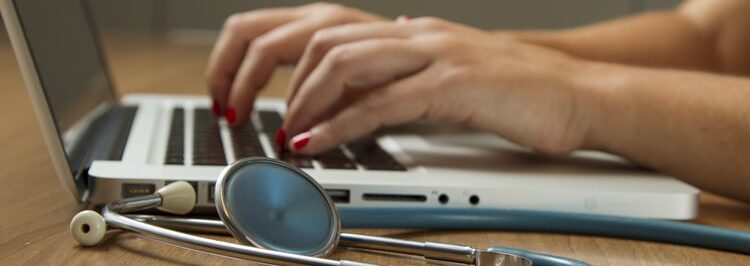Concerned about Employee Health? Consider Jumping on the Telemedicine Bandwagon

After four long months, most states are moving into their final phases of reopening. However, COVID-19's persistence is still leaving many feeling a sense of general panic, helplessness and uncertainty. For many employers, fear of workers contracting the virus or being potential vectors in the community have driven the workforce behind closed doors and open computer screens. But as businesses attempt to reopen and essential businesses continue to operate, workers still run the risk of potentially becoming exposed or infected. The question remains: How can you mitigate the risk of COVID-19 contagion for employees returning to work?
Telehealth and telemedicine are terms that have been simmering below the surface for years now. As technology is rapidly changing and evolving, so has the way we treat, diagnose and manage care. In the pandemic, telemedicine has been thrust to the forefront of many employers' risk mitigation plans. It is not only an effective way for healthcare workers to keep a social distance from potentially sick employees, but it is also a quick and easy to access tool for monitoring these employees and further preventing the spread.
Medical experts categorize telemedicine into two modalities: store-and-forward and real time. Store-and-forward telemedicine involves transmitting medical data (think MRI images or EEG results) to a medical specialist for assessment in another location. Store-and-forward services do not require the sending and receiving parties to communicate at the same time, and these services are most commonly used for diagnosis and treatment decisions. Examples of specialties which may use store-and-forward modalities are radiologists or dermatologists. Real-time interactions between patient and provider could include phone calls or Skype meetings to discuss symptoms and treatment plans, much like an in-person doctor's appointment.
In terms of a workers' compensation risk, there are several situations when an injured worker's access to care would be greatly enhanced by telemedicine capabilities. For instance, if a manufacturing employee injures themselves while working an overnight shift, the only other option may be to visit an emergency department for evaluation. Or, if a truck driver sustains an injury while on the road, the closest clinic may be in a remote location. Under these circumstances, telemedicine may prove to be an advantageous resource for immediate assessment.
In addition to initial injury evaluations, follow-up appointments such as post-operative visits and second surgical opinions may be handled through telemedicine technologies. Remote monitoring, also known as self-monitoring, allows healthcare providers to monitor complex, high-risk conditions and remain attuned to a patient's progress and recovery to help prevent re-injury, complication, or delays in treatment. This method can be primarily used for managing chronic diseases or specific conditions, and quite possibly, COVID-19 exposure.
Considering these positive effects, telehealth plans or models have the potential to save both time and money for employees and employers alike. It's true that not every injured or sick worker may be an ideal candidate for telemedicine - and in some circumstances, there is simply no replacement for hands-on care - but any resource than can alleviate obstacles for even a subset of workers while upholding clinical standards is certainly worthy of consideration.
The main purpose behind telemedicine is to replace face-to-face encounters between patients and providers to reduce the spread of COVID-19 and provide easier access to care. While there may be long term legal concerns with telemedicine such as privacy issues, prescribing medications, cross-state medical licensing requirements or governmental regulation, telemedicine may be a critical and necessary answer to the short term battle against COVID-19, as well as many other healthcare challenges that will likely persist long after.
